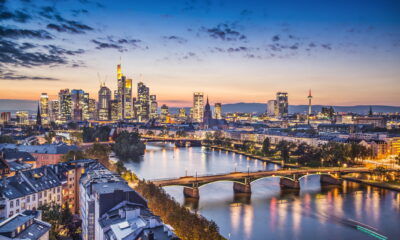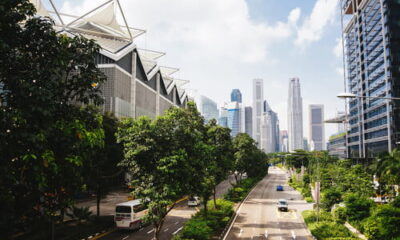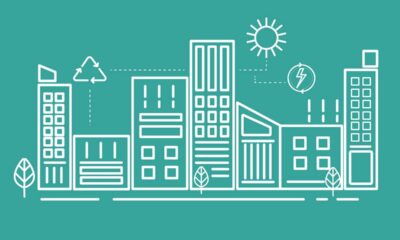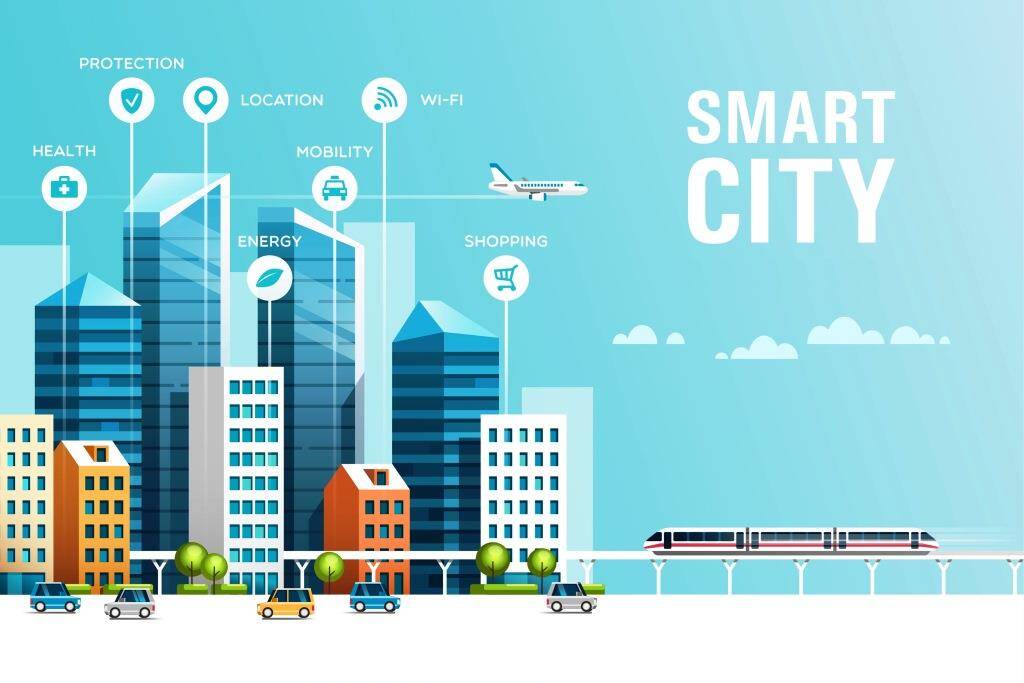
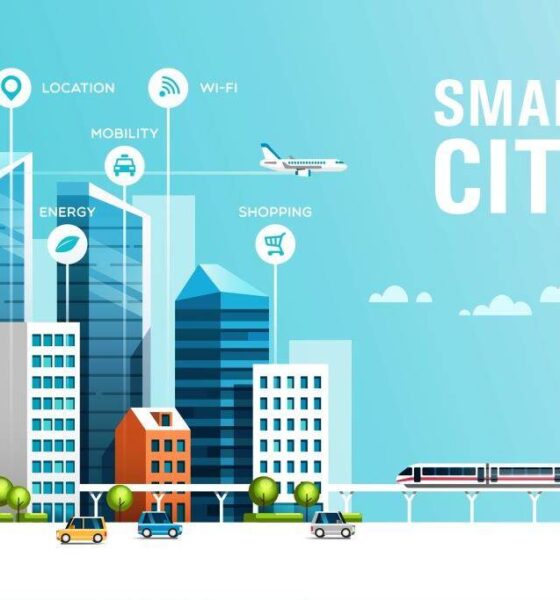
Environment
Smart Cities Are Destined to Make Your Megapolis Greener
The economist Ed Glaser, an expert on urbanization, in his book “The Triumph of the City”, calls the city “the greatest invention of mankind.” In his opinion, this is the most effective way of settling people. Indeed, although cities occupy only 2.6% of the surface of our planet, more than half of the world’s population lives there, they create 80% of world GDP.
Cities Are Greener than Rural Communities – But Smart Cities Are Even More Sustainable
Cities can also be a greener alternative to country-living, although this is something that doesn’t get as much attention as it should. The reason is that cities are able to use resources more efficiently. CityLab published an article about this in 2012. Today, megapolises are growing faster than ever in history: every week more than 3 million new residents move there to get an education, find an interesting job, and start a business. Cities constantly need more energy, water, houses, hospitals, and finally, information about what needs to be improved.
How to cope with these tasks with limited resources and people? Machine learning algorithms and AI programming are solutions. They help to serve a large stream of citizens, quickly find and analyze information in a huge amount of unstructured data, monitor and predict risks. This is a great way to make cities eco-friendlier.
The city with highly automatized processes is called a smart city. This is a complex system consisting of connected devices, sensors, and intelligent technologies. But with a lot of new devices, there is an urgent need to analyze, process and store huge amounts of data. In turn, competent work with data benefits both residents of cities and businesses operating in the megapolis.
But what does this mean from an eco-friendly standpoint? You can learn more about this from this article in Urban Hub. Let’s take a look at examples of how a city becomes really smart with artificial intelligence and thereby help make the communities more sustainable.
1. Digital government services
The need to automate one or another city service depends on many factors. The most important is the complexity and the required time. The task must be a chain of repetitive actions. Take any service, for example, getting a new passport. There is a package of documents that a person must bring to the office: an old passport, an application, a marriage certificate, and so on. Reading, extracting and verifying data can be fully trusted to intelligent technologies and processing any documents, references or permissions will take much less time.
The second criterion is the time to provide the service. What people don’t like is to wait. The competitive advantage of the metropolis has always been a higher rhythm of life: we live in the city in order to have more time. So, in one of the terminals of Heathrow Airport, there are gates with biometric scanners. Passengers apply for a boarding pass, and at this time, the AI matches the user’s face with a picture taken at check-in. This approach makes possible to pass passengers many times faster — more than 32 million per year.
Speed is even more important when it comes to people’s safety or income for the city. Thus, monitoring the transport situation, processing information about accidents, and budget planning are the areas where it will soon be impossible to do without smart technologies. For example, the London Land Registry processes 10 million pages of documents per year. The program automatically scans them, extracts the data and enters the necessary information into the database. This helps department employees to quickly resolve issues of any complexity in assessing, registering and selling real estate without making people wait a long time for a decision.
2. The answer to the question in one click
It is impossible to imagine a modern city without fast feedback between those responsible for urban communications, transport and the environment, and those who use these services. AI quickly analyzes the requests of millions of citizens and looks for the answer in a vast array of information.
In Los Angeles, the Chip bot answers questions from citizens. At first, it helped to find contractors, and this helped simplify the city purchases. Now, other services are connected to Chip.
In Daegu, South Korea, in the mobile application, AI responds to citizens’ questions related to passport processing. In Moscow, speech recognition technologies and robot operators help human contact center operators work around the clock. 34 hotlines handle more than 2 million calls per month.
3. The work of open data
A smart city is an open city. The more connected devices, sensors, and intelligent systems, the more information is available for analysis. This data can be useful for both residents and businesses, therefore, there are more and more projects where information about the city activities becomes structured and easy to find. There are city portals with open data on the work of public transport, environmental research and water quality, for example, in Chicago and many Chinese cities.
But information should not remain useless: it can be used to draw conclusions or create useful services, such as offline maps.me maps, with thousands of volunteers from all over the world working on its improvement.
In the British Once Upon a Crime project, scientists compared demographics data with crime reports in London. The algorithm made it possible to predict with an accuracy of 68% when and where exactly a crime could happen in a city. Based on these data, it is possible to more effectively distribute the police and equipment in problem areas.
4. Operational Efficiency: Urban Planning and Purchases
The less free space remains in the city, the higher the cost of each piece of land. Often the problem of building density is solved by building more houses and increasing the number of floors. As a result, giant multi-flat anthills appear, and this makes the transport accessibility of some areas, the ecological situation, and the quality of life in general much worse.
To calculate the city development a few steps forward, people also use AI. For example, in Washington, technologies reveal which types of urban development are better suited to maintain a healthy lifestyle. And in Ho Chi Minh City, Vietnam, with the help of machine learning and satellite images, architects and engineers determine whether a project fits the city development strategy. Also, they find areas that may be flooded in order to evacuate people from dangerous places.
Another important task for cities is financial planning. All information on the organization’s income and expenses can be updated in real-time, even if it comes from a variety of sources in different parts of the city when you use intelligent information processing platforms. They automatically retrieve transaction data from millions of accounts and acts.
Global expenses on the smart cities development are rapidly growing: by 2021, they are expected to reach $135 billion. Much has already been done, but some areas still require special attention. Do you believe that new technologies will effectively solve them?
Smart Cities Are the Key to Sustainability
Sustainability is a major concern people all over the world have raised. Smart cities are helping communities meet their sustainability goals within an urban setting.


 Environment10 months ago
Environment10 months agoAre Polymer Banknotes: an Eco-Friendly Trend or a Groundswell?

 Environment11 months ago
Environment11 months agoEco-Friendly Home Improvements: Top 7 Upgrades for 2025

 Features9 months ago
Features9 months agoEco-Friendly Cryptocurrencies: Sustainable Investment Choices

 Features10 months ago
Features10 months agoEco-Friendly Crypto Traders Must Find the Right Exchange
